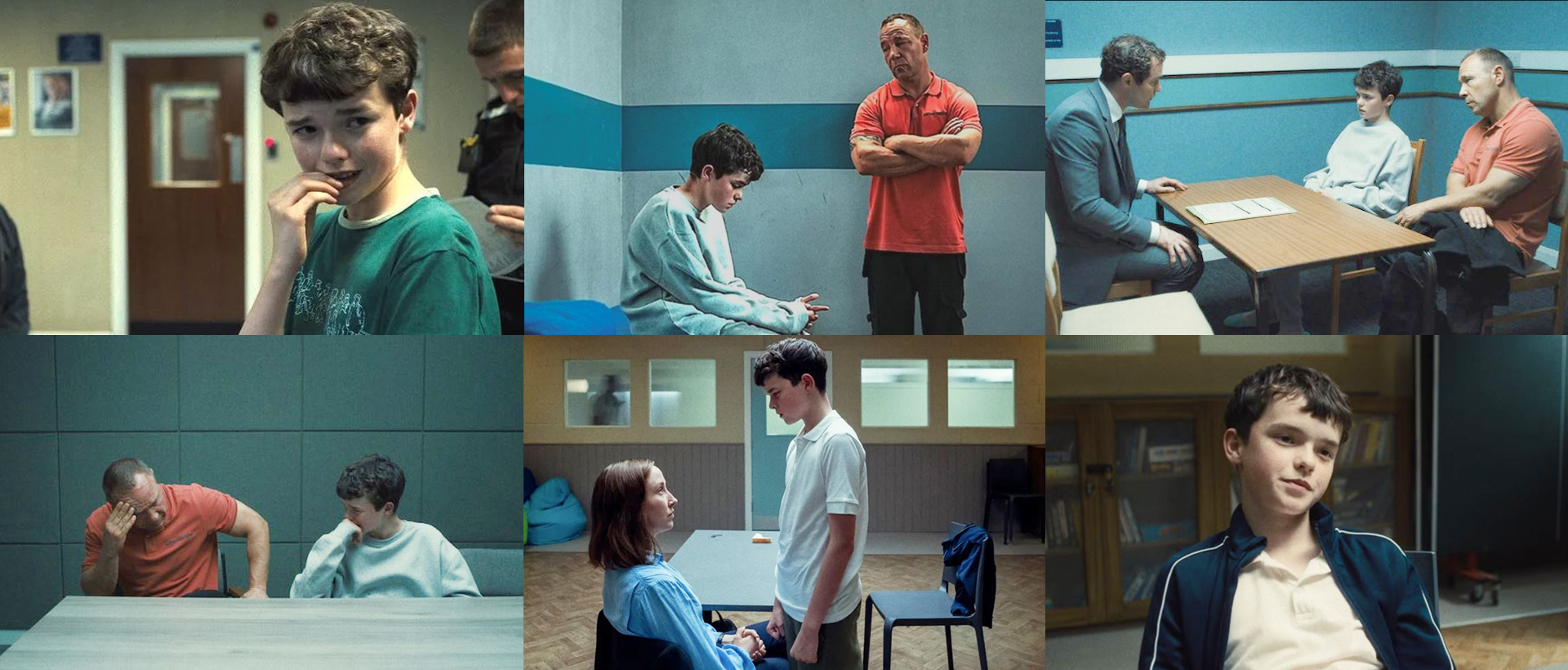
Adolescence The Netflix Series – What Does it Tell Us and How Can We Respond?
What Is Adolescence About?
The dark story of Jamie Miller, 13, accused of killing his classmate Katie Leonard is a dark drama on Netflix. And unlike other crime shows, Adolescence explores the psychological and social pressures which drove the crime and highlights the darker sides of boyhood in the digital age.
Is Adolescence Based on a True Story?
While adolescence is a fictional story, it is inspired by real youth violence and online radicalization cases. Co-creator Stephen Graham wanted to highlight how modern technology, social rejection and emotional suppression create adolescent crisis.
The Impact of Netflix’s Adolescence on Viewers and Society
How Netflix's Adolescence Reflects Real-Life Tragedies
It is more than a crime drama - Netflix's Adolescence is a dark reflection of real-life tragedies unfolding in communities around the globe. This series explores how social and psychological pressures can lead youth to take destructive paths. But is it so troubling? We think it's the fact that Jamie's story is reminiscent of real-life youth violence, isolation and digital manipulation. Break it down.
The Effects of Online Communities
Jamie becomes involved in online toxic environments that normalize extremist ideologies and harmful behaviors in adolescence. That's not fiction either - it mirrors real-world situations where teens are radicalized via social media or anonymous forums. Internet echo chambers promote harmful ideas and keep people from real life.
Psychological Insight:
- Adolescent brains are impressionable due to ongoing neurological development.
- The prefrontal cortex is still developing (responsible for decision-making and impulse control).
- Excessive negative content online can cause cognitive distortions that make harmful actions seem justified.
Cyberbullying and Social Rejection
Jamie's experience of being bullied and socially excluded contributes to his downward spiral. Studies show exposure to cyberbullying repeatedly increases aggression, depression and suicidal thoughts.
Statistics Speak:
- Bullying online affects 37% of young people.
- Cyberbullying victims have double the risk of developing mental illness.
- Social rejection triggers the same brain regions as physical pain.
The Dark Side of Masculinity: Emotional Suppression
A crucial issue is toxic masculinity and emotional repression. Like many boys, Jamie grew up believing that emotions are a weakness. This leads to:
- Emotions being bottled up until they become angry or violent.
- Seeking validation in destructive ways.
- A disconnected feel from traditional supports such as family, school, or friends.
What Can We Learn?
The story behind Netflix's 'Adolescence' is also a wake-up call. This is a reminder of the importance of:
- Talking about mental health openly.
- Recognition of online radicalization red flags is important.
- Encourage adolescents, especially boys, to feel emotions healthily.
- Healthy monitoring of adolescents' activities by parents.
- Mindful parenting and the importance of good mental health among parents.
A Parent’s Perspective
For parents, 'Adolescence' is a warning and an opportunity. It's a time when their child appears happy on the surface while quietly struggling with inner issues. Some parents assume their teens are OK because they laugh, socialize and look "normal," but underneath the surface may be unresolved emotional turmoil, rage or confusion. For Jamie, his parents never knew the extent of his distress. They believed he was happy, not realizing the storm brewing within him. This teaches a valuable lesson: what teens show on the outside may not be their true feelings. Silence doesn't mean stability. Adolescents suppress their struggles out of fear of judgment or misunderstanding.
What Is Adolescence?
Adolescence is a crucial transitional phase of growth and development between childhood and adulthood. It is marked by physical, emotional, psychological, and social changes that shape an individual's identity and prepare them for adulthood.
The World Health Organization (WHO) defines an adolescent as any person between 10 and 19 years of age. This period is universally recognized across cultures as a distinct stage of development, though the way it is understood and navigated may vary based on social, cultural, and environmental factors.
What Are the Physical Changes of Adolescence?
- Growth Spurts: Rapid gains in height and weight.
- Sexual Development: Primary and secondary sexual characteristics develop.
- Cognitive abilities and impulse control improve with age as the brain develops.
What Are the Social Changes of Adolescence?
- Seeking Independence: Wanting autonomy from elders.
- Identity Formation – Discovering values and beliefs.
- Friendships & Social Acceptance: More peer influence.
How Does Mental Health Change During Adolescence?
Adolescence brings emotional, psychological, and behavioral changes that affect mental health.
Managing emotions: Teens can experience mood swings and difficulties with emotional regulation because of hormonal and brain development changes. With no support, stress and anxiety can become more intense and difficult to manage.
Social pressures: Balancing school, friendships, and personal expectations creates great stress when the support and coping skills are low, that often causes anxiety and self-doubt.
Enhanced Vulnerability to Anxiety and Depression: Rapid physical, emotional, and social changes make teens more vulnerable to mental health disorders. Worldwide, between 10 and 20% of adolescents experience such difficulties.
Risky behaviors and impulsivity: Increased experimentation with substances and reckless actions are associated with adolescence resulting in increased mental health and associated risks.
The Growing Impact of social media on Adolescence
How Does Social Media Affect Adolescent Development?
Social media plays a major role in adolescent life, influencing:
- Self Esteem: Trying to compare yourself to unrealistic online personas.
- Sleep Disorders – Interrupted sleep due to excessive screen time.
- Risks of anxiety, depression, and loneliness are higher.
Social media provides connectivity - but we must also promote responsible online content consumption and critical thinking.
Learn More 👉 Social Media Mental Health Campaigns & Suicide Prevention
How Can Parents Support Healthy Adolescent Development?
How to Help Your Child Navigate Adolescence
Adolescence entails emotional ups and downs, identity disputes, and family pressures. Teenagers often struggle with expressing their emotions or even asking for assistance. Creating a supportive and understanding environment is crucial for parents. But beyond simply "keeping communication open," specific, intentional actions help guide your kid through these transformative years. Also, don’t forget about self-care—parenting is even harder when you’re overwhelmed. Taking care of yourself helps you better support your child and reduces conflicts.
Here are some practical ways to navigate this phase together:
1. Model Kindness to Develop Empathy
Children learn by observing their parents. In case you would like them to be kind, you have to display kindness in your everyday interactions - with loved ones, friends, as well as strangers.
- Speak with respect, even during disputes.
- Show patience when they make mistakes.
- Volunteer together for a charitable cause.
Teach them to value as well as acknowledge other individuals' feelings.
A child that experiences kindness firsthand is more likely to practice it with peers and in interactions.
2. Motivate Self - Compassion to Strengthen Self Worth
Teenagers often are their very own worst critics. Social comparisons, academic pressure, and body image issues could harm self-esteem. Parents must teach self-compassion by:
- Helping them recognize their strengths as well as achievements.
- Teaching them that imperfection is natural and everybody has struggles.
- Encouraging them to reframe their negative feelings ("I failed a test" → "I can learn from this mistake").
3. Instill Good manners for Social Success
Good manners go beyond just saying "please" and "thank you"—they shape how teenagers connect with others and build strong relationships. Instead of making it feel like a lesson, encourage them through example and positive reinforcement.
- Respecting personal space and different opinions.
- Apologizing sincerely when needed.
- Expressing gratitude in meaningful ways.
- Communicating clearly while staying respectful.
Rather than rules to follow, these are skills that will help them navigate friendships, workplaces, and social situations with confidence.
4. Promote Mindful Communication
Parents frequently converse with their kids rather than with them. Mindful communication involves:
- Open-ended questions encourage detailed responses, while closed-ended questions lead to short answers.
- Example (Open-ended): "What do you think about this idea?"
- Example (Closed-ended): "Do you like this idea?"
- Use non-judgmental reactions to encourage open sharing.
- Practice active listening without interrupting.
- The power of words: Be mindful of language, as words deeply impact others' emotions.
Teens are more receptive to discussing their difficulties when they feel heard with no fear of rejection.
5. Establish Healthy Boundaries Without Oversight
Adolescents might benefit from structure, but excessive supervision can promote rebellion. Rather than imposing stringent rules, involve them in boundary-setting:
- Together negotiate curfews, screen time, and social outings.
- Explain the reason behind rules instead of requiring blind obedience.
- Allow them to make age-appropriate choices and face natural consequences.
- Boundaries guarantee security while preserving independence.
What Can We Do?
As a society, it’s crucial to:
- Promote Digital Literacy - Help young people use online spaces safely.
- Resolve Toxic Masculinity - Create a space for young adults to express emotions freely.
- Support Mental Health - Increase awareness & accessibility of counseling services.
- Monitor Social Media's Impact - Advocate for responsible tech use among youth.
Final Thoughts
The Netflix series 'Adolescence' isn't a crime drama - it's a social commentary about the struggles modern teens face. From online radicalization to toxic masculinity and social isolation, the series confronts hard realities that many adolescents face every day.
It is a wake-up call - listen up - understand - act now before more tragedies happen. Teenagers today face greater challenges than ever before with a rapidly changing digital landscape and mounting social pressures. Neglecting such warning signals would fail an entire generation.
Digital literacy seeks to provide young adults with the skills necessary to utilize technology effectively, while simultaneously showing them tips on how to think critically, act responsibly, and shield themselves in an internet world loaded with dangers and opportunities. We enable them to navigate digital spaces safely by enhancing them how to identify misinformation, safeguard their privacy, as well as engage constructively. By following a proactive approach to digital literacy, the future generation isn't simply passive users of technology but also educated, ethical as well as responsible digital people capable of adapting to a continuously changing digital environment.
Read More 👉 Ethical Challenges Of Digital Mental Health For Young People
FAQs
What are some common mental health challenges faced by adolescents?
Adolescents often face mental health challenges such as anxiety, depression, and mood swings. These issues can be influenced by peer pressure, academic stress, and social media exposure.
How can parents and caregivers support adolescents with mental health issues?
Parents and caregivers can support adolescents by fostering open communication, encouraging them to express their feelings, and seeking professional help when needed. Creating a supportive environment where mental health discussions are normalized can help adolescents feel more comfortable seeking help.
Is the series appropriate for teenagers to watch?
'Adolescence' contains mature and intense themes. It is recommended that parents watch it first or with their teens, and discuss the content openly to provide guidance and context.
Does watching such content increase awareness or desensitize viewers?
That depends on how the content is presented and processed. When paired with open discussion and reflection, it can raise awareness. Without context, it may risk desensitization.


